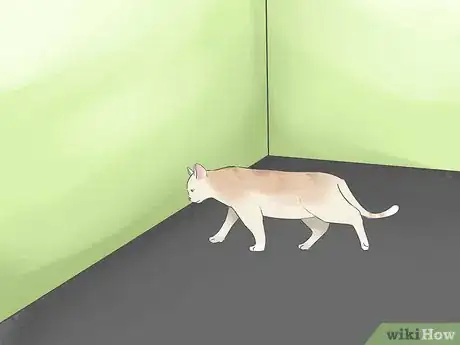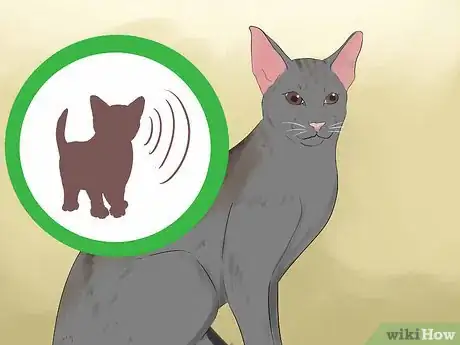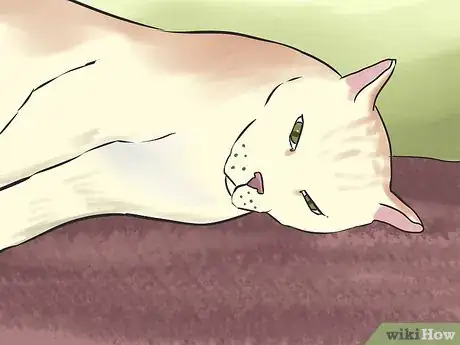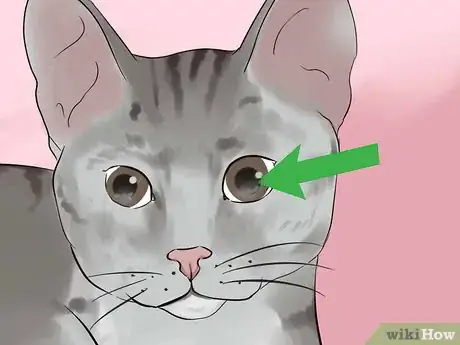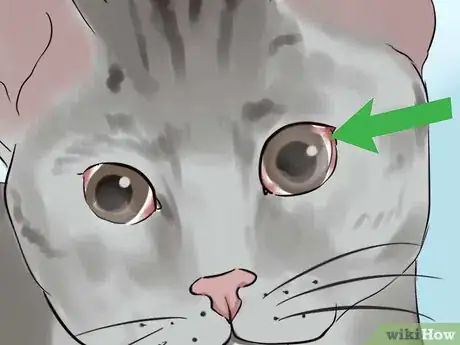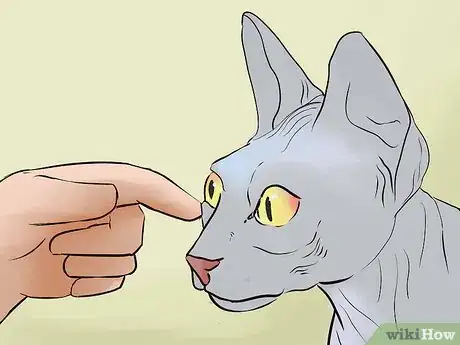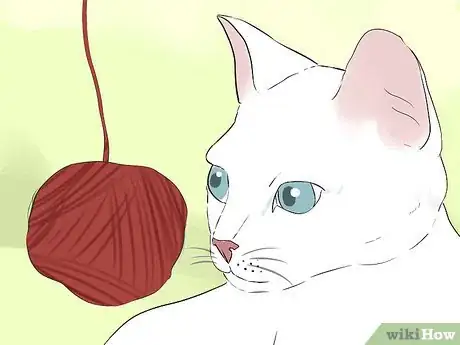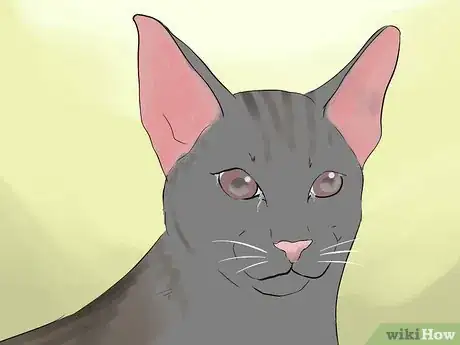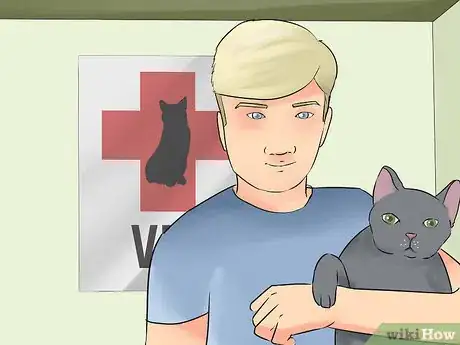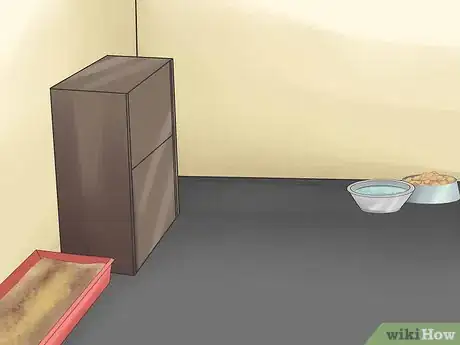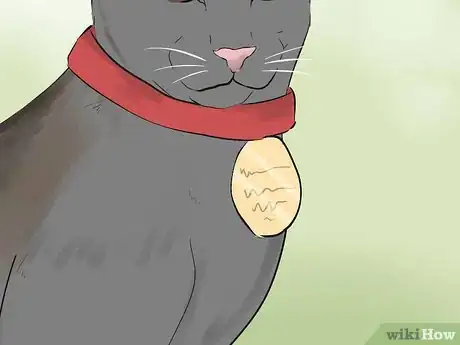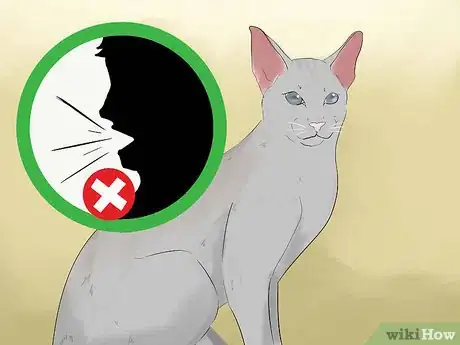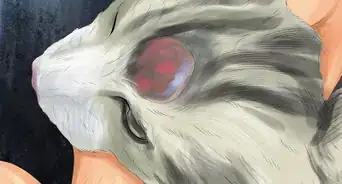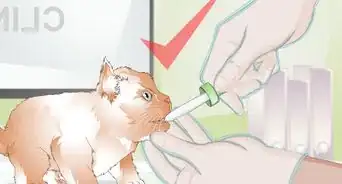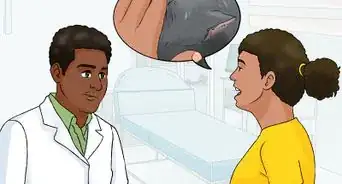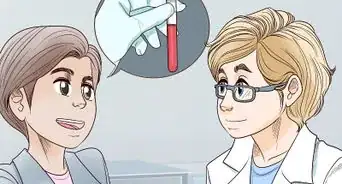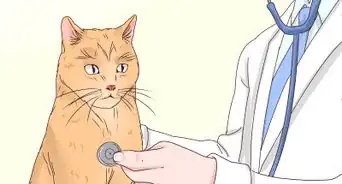This article was co-authored by Jean Johnson. Jean Johnson is a Cat Specialist and a writer for the KittyNook Blog. Jean specializes in providing advice on cat health, play, and general information about cats and cat breeds.
There are 9 references cited in this article, which can be found at the bottom of the page.
wikiHow marks an article as reader-approved once it receives enough positive feedback. This article received 16 testimonials and 83% of readers who voted found it helpful, earning it our reader-approved status.
This article has been viewed 288,351 times.
Cats have extraordinary eyes that allow them to see clearly indoors and out during different times of day. However, injuries to the eyes and many diseases can significantly impair your cat’s eyesight or even cause blindness. If you can catch incipient blindness early, your cat can receive treatment that can completely or partially save its sight. If your cat does go blind, you’ll want to be able to help it. Look for behavioral or physical changes that can indicate if your cat is losing its sight or is blind so you can best care for it.
Steps
Looking for Behavioral Changes
-
1Look out for clumsiness. Watch to see how your cat gets around furniture or if it misjudges jumping onto furniture. Also note if your cat bumps into walls or furniture that it previously knew to walk around. Acting clumsy in spaces where it spends a lot of time can be a sign of failing sight or blindness.[1]
- Another sign to watch for is if your cat is tripping on stairs or slipping when trying to jump up to its favorite place.
- Note if your cat is having problems with other familiar objects, like finding its food and water bowls.
-
2Watch your cat’s walk. Pay attention to your cat’s walk. Note if it is crouching closer to the ground. It may be feeling its way with its nose and whiskers. Other signs to watch are if your cat is walking with its head down or is moving its head up and down to figure out distances.[2]
- Another sign to look for is if your cat is wandering aimlessly.
Advertisement -
3Listen to your cat. Do you hear your cat vocalizing more? When cats do not see well or are blind, they tend to be noisier to vocalize their distress. You may also notice that your cat is generally acting nervous, fearful, or upset as it adjusts to its lack of sight.[3]
- You may also see that your cat is more easily startled.
-
4Notice if your cat is clingy. Look for signs that your cat is less confident than usual. For example, note if your cat clings to you more or spends more time by your side. Also pay attention to if your cat sleeps more or generally moves around less often than usual.
Noting Changes to the Eyes
-
1Look at your cat’s pupils. If you suspect your cat is blind or going blind, look at its pupils. Note if the pupils stay the same in both bright and low light. Also check to see if the pupils are different sizes. Both of these are signs of blindness or incipient blindness.
- Also note if your cat is squinting or if it’s indifferent to changes in lighting.
-
2Check out the color of your cat’s eyes. One of the changes you may see is a change of eye color. Additionally, look for more redness in your cat’s eyes. Alternatively, you might see that your cat’s eyes look milkier, cloudier, or appear more white.
- Look for excessive redness in the tissues around the eyes. Don’t worry if this is lighter pink, which is normal.
- If the lenses of your cat’s eyes are opaque, this might be a sign of cataracts.
-
3Test your cat’s menace reflex. Move a fingertip quickly towards your cat’s eye without making contact with the cornea. A sighted cat will flinch or blink when you move your fingertip towards them, but a blind cat will remain unaware of your finger. Don’t get too close to your cat’s whiskers or create a breeze on its whiskers so it can't sense your finger approaching its face.
-
4Try dropping a ball of yarn in front of your cat. Notice if she watches or follows the descent of the ball. Most sighted cats will watch the ball drop. A blind cat will remain oblivious as the ball passes in front of it. Avoid getting too close to your cat's whiskers so it doesn't sense the ball.[4]
-
5Pay attention to the eyes’ size to check for glaucoma. If one eye seems larger than another, take your cat to the vet. This may be a sign of glaucoma. While this does not necessarily mean that your cat is blind, glaucoma can cause blindness if left untreated.[5]
- One or both eyes may also appear cloudy.
Caring for Your Blind Cat
-
1Take your cat to the vet. Bring your cat to the vet if you suspect it is blind or may be going blind. Share your concerns with the vet, including a list of the symptoms that you’ve noticed. Take your cat to the vet as soon as you can because early treatment can be critical in preventing overall blindness or catching a dangerous condition that may have led to the symptoms you’ve observed.
- Blindness can be a symptom of other serious diseases, such as high blood pressure. High blood pressure can cause strokes and seizures, so it is important to treat it early.[6]
-
2Keep things consistent at home. Make as few changes as you can to your cat’s environment. This will help it adjust to its lack of sight. Avoid moving food and water dishes and litter boxes so your cat can easily find them.[7] [8]
- You can also lower the furniture or provide ramps for it to more easily climb onto furniture.
- Keep your floors clutter-free to help your cat move around more easily.
-
3Supervise your cat outdoors. Escort your cat if you take it outdoors and make sure to keep it in an enclosed area. Otherwise, keep your cat inside to protect it.[9] Keep windows and doors closed to keep it indoors. Similarly, board up any pet doors.
-
4Get your cat identification. Microchip your cat in case it leaves home. Also make sure your cat has a collar and tags. Add a tag that notes your cat is blind or has limited sight.[10]
-
5Avoid startling your cat. Try not to make loud noises or startle your cat. Do your best to stay calm around it and to keep it calm. Also warn family members, especially children, and visitors not to make loud noises or do anything that can scare your cat.
- When you walk into a room, say something out loud so your cat knows you're coming.[11]
Expert Q&A
-
QuestionCan a cat suddenly go blind?
 Pippa Elliott, MRCVSDr. Elliott, BVMS, MRCVS is a veterinarian with over 30 years of experience in veterinary surgery and companion animal practice. She graduated from the University of Glasgow in 1987 with a degree in veterinary medicine and surgery. She has worked at the same animal clinic in her hometown for over 20 years.
Pippa Elliott, MRCVSDr. Elliott, BVMS, MRCVS is a veterinarian with over 30 years of experience in veterinary surgery and companion animal practice. She graduated from the University of Glasgow in 1987 with a degree in veterinary medicine and surgery. She has worked at the same animal clinic in her hometown for over 20 years.
Veterinarian Yes, a common cause of sudden blindness in cats is high blood pressure. This causes the retina to separate from the back of the eye, resulting in blindness.
Yes, a common cause of sudden blindness in cats is high blood pressure. This causes the retina to separate from the back of the eye, resulting in blindness. -
QuestionHow do you handle a blind cat?
 Pippa Elliott, MRCVSDr. Elliott, BVMS, MRCVS is a veterinarian with over 30 years of experience in veterinary surgery and companion animal practice. She graduated from the University of Glasgow in 1987 with a degree in veterinary medicine and surgery. She has worked at the same animal clinic in her hometown for over 20 years.
Pippa Elliott, MRCVSDr. Elliott, BVMS, MRCVS is a veterinarian with over 30 years of experience in veterinary surgery and companion animal practice. She graduated from the University of Glasgow in 1987 with a degree in veterinary medicine and surgery. She has worked at the same animal clinic in her hometown for over 20 years.
Veterinarian Always speak to the cat before touching them. Then stroke the cat and travel your hand around to where you need to put it to pick them up. This avoids startling the cat.
Always speak to the cat before touching them. Then stroke the cat and travel your hand around to where you need to put it to pick them up. This avoids startling the cat. -
QuestionHow can I test my cat's eyesight?
 Pippa Elliott, MRCVSDr. Elliott, BVMS, MRCVS is a veterinarian with over 30 years of experience in veterinary surgery and companion animal practice. She graduated from the University of Glasgow in 1987 with a degree in veterinary medicine and surgery. She has worked at the same animal clinic in her hometown for over 20 years.
Pippa Elliott, MRCVSDr. Elliott, BVMS, MRCVS is a veterinarian with over 30 years of experience in veterinary surgery and companion animal practice. She graduated from the University of Glasgow in 1987 with a degree in veterinary medicine and surgery. She has worked at the same animal clinic in her hometown for over 20 years.
Veterinarian Test near vision by wiggling a finger near the eye and watch for blinking (avoid touching the whiskers). Check mid-field vision by placing an object in the cat's path where she wouldn't expect it to be.
Test near vision by wiggling a finger near the eye and watch for blinking (avoid touching the whiskers). Check mid-field vision by placing an object in the cat's path where she wouldn't expect it to be.
References
- ↑ http://www.cat-world.com.au/Cat-Health-Collection/blindness-in-cats.html
- ↑ http://www.cats.org.uk/uploads/documents/The_Cat_Mag_extracts/Blind_cats.pdf
- ↑ http://www.pethealthnetwork.com/cat-health/cat-diseases-conditions-a-z/sudden-onset-blindness-cats
- ↑ http://www.eyevet.ie/wp-content/uploads/2009/01/vision_cat.pdf
- ↑ https://www.vet.cornell.edu/departments-centers-and-institutes/cornell-feline-health-center/health-information/feline-health-topics/feline-glaucoma
- ↑ https://icatcare.org/advice/cat-health/hypertension-high-blood-pressure-cats
- ↑ Jean Johnson. Cat Expert.
- ↑ https://icatcare.org/advice/cat-health/sudden-onset-blindness-cats
- ↑ Jean Johnson. Cat Expert.
- ↑ http://www.petplace.com/article/cats/diseases-conditions-of-cats/features/living-with-a-blind-cat
- ↑ Jean Johnson. Cat Expert.
About This Article
To tell if your cat is blind, look for clumsiness such as bumping into walls or furniture or tripping on stairs or rugs. Moreover, note if your cat is walking crouched closer to the ground, has become more verbal, or is extra clingy, as these can all be signs that your cat has vision problems. Alternatively, you can look in your cat’s pupils to see if they look milkier or cloudier than usual, which could indicate eye trouble. You can also test your cat’s vision by moving your finger quickly towards its eye and seeing if it flinches or blinks, which means it can see. For more tips from our Veterinary reviewer, including how to care for your blind cat, keep reading!
